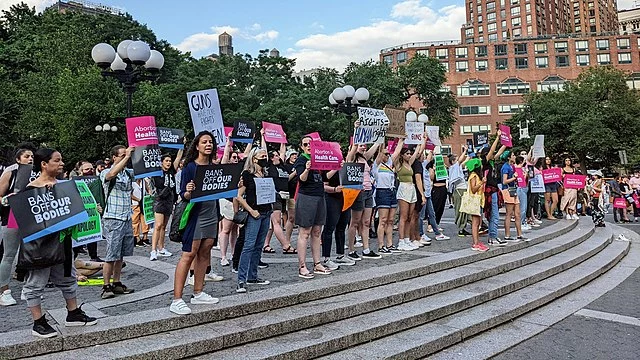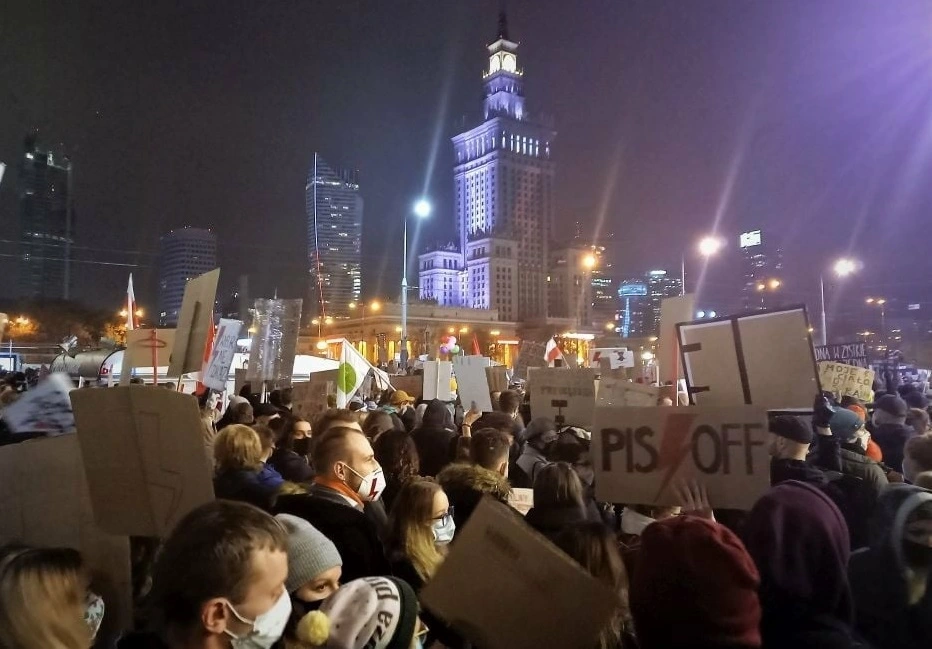It is a dark day in American judicial history because the Supreme Court of the United States today overturned the right to an abortion for women. It is a day only comparable to March 6, 1857, when the Dred Scott v. Sandford case was decided, legally extending the reach of chattel slavery throughout the United States. That fateful decision was one of the primary factors leading up to the terrible American Civil War of 1861-1865, a conflict that left up to a million Americans dead and whole zones of the country in ruins. Whether or not today’s decision will ultimately lead to the physical conflict remains to be seen, but as the sun sets tonight, several judicial venues around the United States have ordered boarded-up windows and added security in case of possible violence.
As to abortion rights, I was one of the lucky ones: one of the ones to have been born in the United States in an era when women's reproductive rights were not taken for granted, but when they were most definitely something both sought-after and used. When I was a first-year student in university, living in the student dormitory residence, most of my female friends independently and privately chose to go on hormonal birth control pills -- "The Pill"-- to prevent unwanted pregnancy. Our healthcare was provided to us as part of our university tuition and was both confidential and free of charge.
I was indeed one of the lucky ones: I hadn't had an unintended pregnancy outside of marriage, but do I know women who did? Of course! I had come in from the poorest urban school district in the United States, with the highest teen pregnancy rate in the nation. Do I know women who had abortions? Certainly; I can recall the stories of at least two of them, both of which provide vivid illustrations of the terrible brutality practised by the country's existing capitalist system.
The first of these women, Lorna (not her real name), resides in a home she inherited from her mother when she died away in Gary, Indiana. Since her husband is a long-distance delivery truck driver and frequently away from home, Lorna struggles to provide for her own three children while working as a child caregiver. The family's salary is apparently too high to be eligible for miserly government assistance for the "poor," yet it is also too low to adequately sustain their family. For them, having another kid would be disastrous.

The second of these women, Sandy (not her real name), presently resides on the streets of the Boston suburb of Revere, Massachusetts. Sandy, a child of a heroin addict mother and a violent father, alternates between dead-end jobs. She believes that working as a table server at a seafood restaurant will one day lead her to the "American Dream" life she has always imagined for herself—a life with a two-story house with a white picket fence, a vehicle, and 2- 4 kids. Sandy texts me often asking me to send her $10 for menstrual necessities.
Both Lorna and Sandy made clear, free and informed choices to terminate their pregnancies, not solely because it was what would be best for each respective mother in each case, but because bringing a child into such circumstances would be unconscionable. Lorna's kid would be raised in a household where the parents could not adequately care for them or feed them. Sandy's kid would be born into a world where food security is uncertain, outside temperatures in the winter are frequently below zero degrees Fahrenheit (or minus twenty degrees Celsius), and shelter is in doubt.

I was fortunate to live in a place that had basic access to healthcare while I was recently in my own unimaginably abusive marriage, which practically ensured that I was not compelled to bring a kid into such a dangerous environment. As I carefully took pictures of my bruises for the case that would later be dropped by another state's Attorney General, I thought to myself that it was terrible enough that I feared for my own safety, let alone for the protection of a vulnerable child.
A moment of silence is not long enough to mark the end of abortion rights in the United States. But how much time is enough, though? An hour? A day? Weeks? Years? The silence of women who will surely die as a result of today’s the United States Supreme Court decision to end their reproductive freedom will last forever. On the other side, the protesting women who are marching tonight in the United States in their hundreds or maybe millions have broken their quiet, perhaps for good. Feminists and traditional homemakers alike, young teens and twenty-somethings marching alongside matriarchs of grandmother age. Women all over the country are speaking out tonight, speaking out loudly, speaking together, and demanding that they will not become the first generation to have fewer rights than their own mothers.






